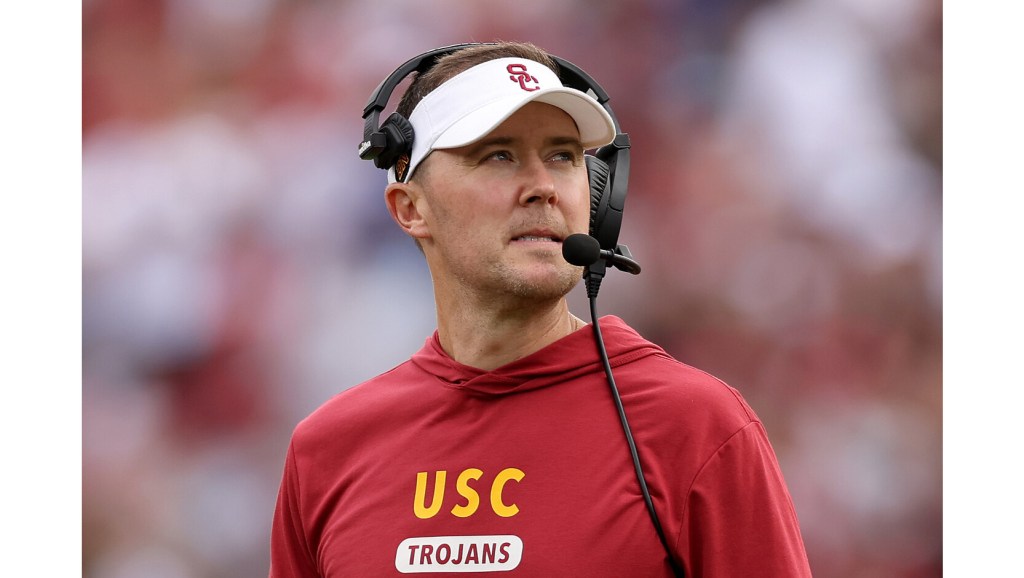
You had to be there. You had to see USC’s losses last season to understand.
Yes, you can read the scores of four of the Trojan football team’s five losses in 2024 – 27-24, 24-17, 33-30, 29-28 – and think they were, in fact, One Play Away™, as Coach Lincoln Riley would often say.
But in the same way that some games are closer than the score indicates, some games don’t feel as close as the final score would lead you to believe.
Not all seven-game series are created equal, right? You don’t earn plaudits for having built a 3-1 lead and blown it.
And you can’t really feel good about yourself if you led Minnesota late in the third quarter, but burned through all your timeouts and threw a late interception to lose. Or if you led 20-6 at halftime at home against Penn State before losing in OT. Or after you’ve blown a 14-point lead at Maryland.
You can’t hope to be saved by the bell in college football. And you don’t get credit for making a game out of a game you were in control of.
But you do get points for doing something about that bad habit, for trying to tackle it head on.
For acknowledging you have a problem in the first place, as Riley recently did … after his traditional preamble of positive spin: “What last year revealed is there’s not any part of the program that’s not pretty good or on the doorstep of being pretty good. If not, you don’t have the chance to win damn near every single game you played in the fourth quarter.”
OK, but also: “It’s not just finishing at the end of the games. It’s separating when you’ve got that lead in the third quarter and putting the thing pretty close to out of reach. There’s all these different moments through the game that culminate to the end …
“Are we working on end-game situations and emphasizing that, talking about that? Of course we are,” he added. “But the reality is, every part of this program needs to be a little bit better to take the steps of where we want to be.”
So let me ask, does anyone have better conditioning on your bingo card? How about added depth? And improved clock management? More urgency? Better discipline?
Bingo! If USC – unranked now after starting last year No. 23 before finishing a frustrating 7-6 – can check off all of those boxes, then the Trojans might not only be able to hold the rope, they could avoid the game of tug-of-war outright.
Because if USC is a team that fancies itself as a part of the College Football Championship conversation, it’s about landing early-round knockouts and keeping its always-expectant fans away from the edge of their seats. Especially, obviously, in games like Saturday’s home opener against Missouri State, which will be making FBS debut at the Coliseum.
And in a blink of a few weeks, getting off on the front foot against the gauntlet awaiting the Trojans in their second Big Ten season – they’ll face Purdue, Michigan State, Illinois, Michigan, Nebraska, Northwestern, Iowa, Oregon and UCLA – is a good goal.
But then they’re gonna have to hang on.
That’s why Trumain Carroll was recruited to USC. And word is, under the Trojans’ new Director of Sports Performance, summer was no vacation.
An overhaul in the weight room has collectively upped the Trojans by “800 pounds of muscle,” said Carroll, who also said USC players lost “over 540 pounds of fat.”
“I firmly believe that you don’t ever rise to the occasion, you fall to the level of your training,” Carroll told reporters during camp. “So we do our best to put these guys in the most strenuous, chaotic positions within the training.”
It is that deep, actually.
Or as Riley put it at Big Ten Media Day: “The depth, certainly it’s going to matter.”
Enter Chad Bowden, USC’s new-school general manager, to help beef up a roster, personnel wise – with players like defensive tackle Keeshawn Silver, running back Eli Sanders and cornerback DJ Harvey, all highly rated additions via the transfer portal.
“When you play a schedule like we play, it’s paramount, right? If not, it’s going to show up and get you at some point,” Riley said. “I think the depth, the talent level, and the size of the defensive line, there’s honestly really no comparison to this time 12 months ago.
“There’s young talent. There’s experience. There’s guys now that have been in our system. … We have more guys that can play multiple positions. We have more competition. I think we have better natural pass rushers, and we certainly have more size.”
Now we get to see what the scoreboard says, and how accurate a story it tells.
Originally Published:



